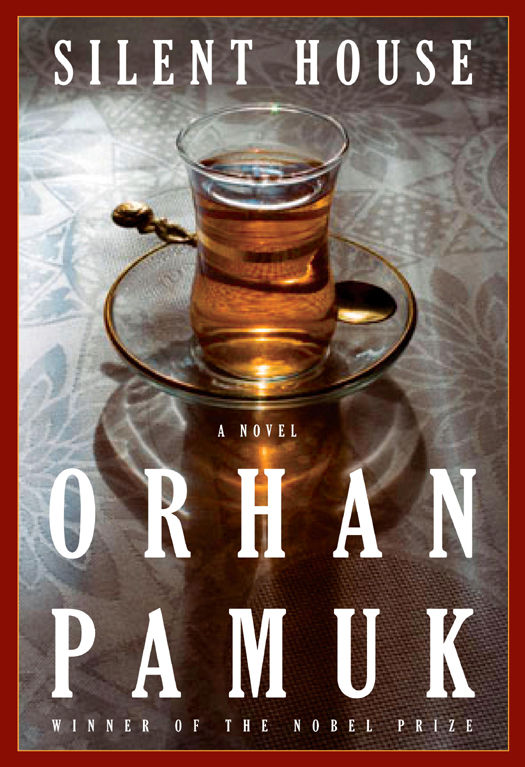
Silent House
کتاب های مرتبط
- اطلاعات
- نقد و بررسی
- دیدگاه کاربران
نقد و بررسی

August 13, 2012
In this first English publication of an early novel by the Nobel laureate, nonagenarian widow Fatma Darvinoglu lives in the eponymous house, a derelict villa in a seaside village near Istanbul. Bitter, sharp-tongued, and irritable, she arrived there as a teenage bride and endured the ensuing decades while her husband, Selahattin, sold off her jewelry to support his writing of a 48-volume encyclopedia intended to prove to his superstitious countrymen that God does not exist and that only by worshipping science could Turkey hope to achieve Westernized civilization. Their son, Dogan, an alcoholic like his father, died at 52, leaving three now adult children who have come to Cennethisar for their annual visit with grandmother. Faruk, the eldest, is a failed historian; Nilgun, his sister, is drawn to the Communist Party; adolescent Metin is jealous of his wealthy peers who drink immoderately and do drugs. The siblings are aware that the dwarf Recep, their grandmother’s servant, is also their uncle. Recep and his crippled brother, Ismail, were the product of Selahattin’s liaison with a servant. Ismail’s son, Hasan, a high school delinquent, has joined with nationalist thugs who frighten villagers. While Pamuk deftly suggests the political strife that roiled Turkish society before the 1980 coup, this narrative never achieves the richness and depth of his later work. All but one of the eight major characters are neurotic, self-pitying, resentful, contemptuous of others—even while they yearn to assuage their loneliness—and filled with grandiose dreams of what they’ll never achieve. Pamuk uses stream-of-consciousness to convey their inchoate thoughts, and he’s most effective when chronicling Hasan’s increasing mental instability. Pamuk’s belief that “istory’s nothing but a story” adds substance to what is otherwise a dispiriting tale. Agent: Andrew Wylie.

October 1, 2012
Previously unpublished in English, the Turkish Nobel Laureate's second novel spins characteristic themes of history and national identity outward from a three-generational domestic scenario. This early work by Pamuk (The Museum of Innocence, 2009, etc.) is weighted toward the younger generation as it considers the complex tensions between tradition and modernism, East and West, using a collage of viewpoints, all related through blood, yet each expressive of a very different perspective. Ninety-year-old widow Fatma still lives in Cennethisar, a village that has developed into a bustling seaside resort, in the old marital home she shared with exiled doctor Selahattin, an atheist and modernist whose passion for science inspired him to do the impossible--to write a 48-volume encyclopedia. Selahattin drank himself to death, as did their son, Dogan, and as probably will Dogan's historian son, Faruk, who, with his two siblings, is visiting Fatma for the summer. The family is served by Recep, a dwarf with a crippled brother, Ismail. Both are Selahattin's bastards, born of a servant. Ismail's son, Hasan, is the spark in this diverse group, the aggrieved, impoverished nationalist whose fantasies of success arise from the furious hopelessness of his situation. Violence, both historic and immediate, class and politics further fracture the emblematic group. Using a repetitive, circular, incremental technique, Pamuk builds a multifaceted panorama distinguished by his customary intellectual richness and breadth.
COPYRIGHT(2012) Kirkus Reviews, ALL RIGHTS RESERVED.

May 1, 2012
In Nobel Laureate Pamuk's second novel, just available in English, the widow Fatima anticipates her grandchildren's annual summer visit to Cennethisar, now a fancy resort near Istanbul but once a fishing village where Fatima's physician husband settled to serve the poor. Even as she reminisces with ever-loyal servant Recep, Recep's nationalist cousin draws the entire family dangerously close to political crisis: the 1980 military coup. With a reading group guide.
Copyright 2012 Library Journal, LLC Used with permission.

September 1, 2012
The Turkish Nobel laureate's previous novel, The Museum of Innocence (2009), garnered considerable praise in the U.S. Now a novel published in his native land in 1983 is appearing in English for the first time. The publisher's probable hesitancy in bringing it out of storage is not surprising. Readers familiar withand fond ofthe provocative psychology and the defining social pictures presented in the author's works previously translated into English will likely face disappointment here. It is nearly certain that American readers will feel inadequate in fixing the narrative into its historical context and in understanding its political atmosphere, which Pamuk hints is about to change. Questions will remain. What exactly is the political atmosphere, and what kind of change is in the air? That said, the premisea family gathers for a summer visit in the faded seaside resort of Cennethisarbrings together a handful of characters with great potential for being interesting, foremost among them, the clan's elder, the old widow Fatima, whose life is now led mostly in her mind, and Recep, her servant, a dwarf who also happens to be the illegitimate son of her late physician husband. The narrative alternates among various characters' points of view, but what limits their full embrace by non-Turkish readers is their lack of anchorage in a readily identifiable time and place. Nevertheless, librarians should expect some demand based on the popularity of Pamuk's previous work.(Reprinted with permission of Booklist, copyright 2012, American Library Association.)

























دیدگاه کاربران